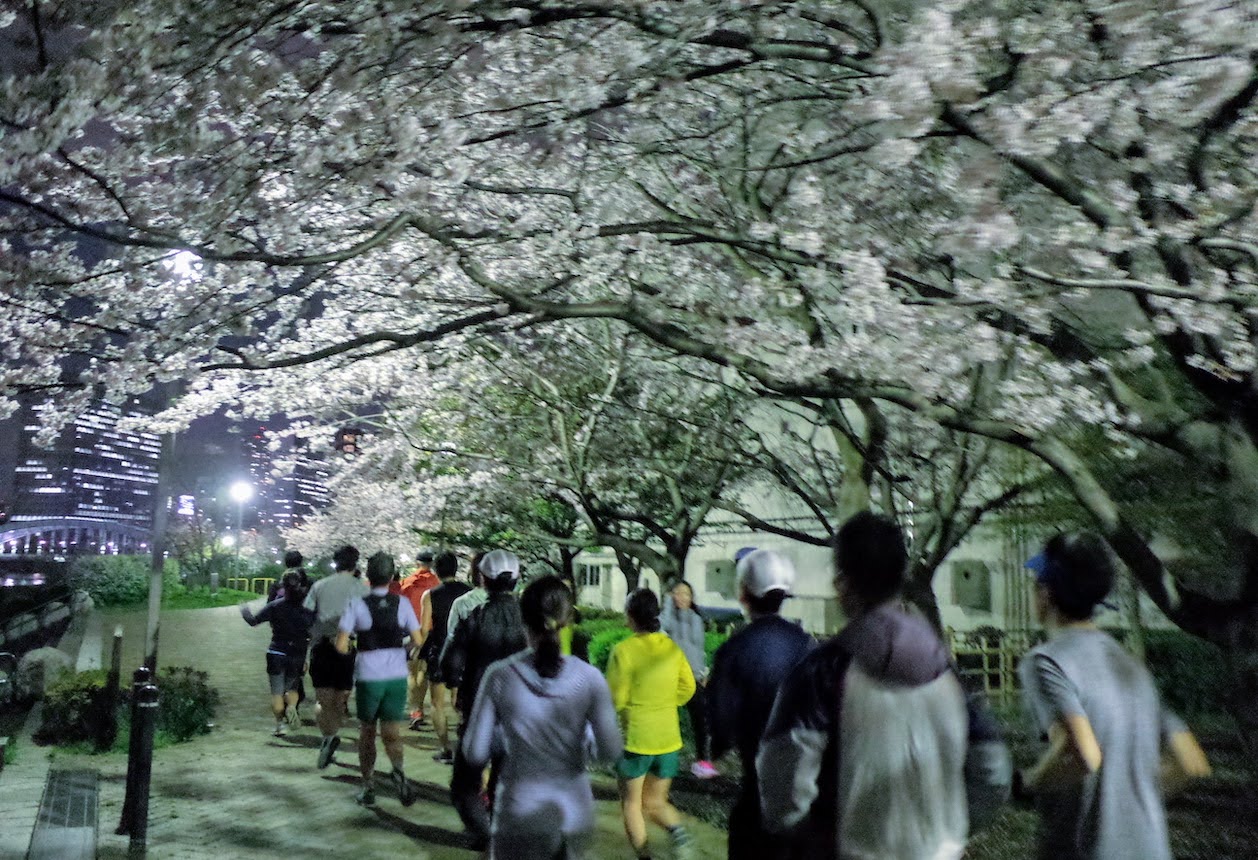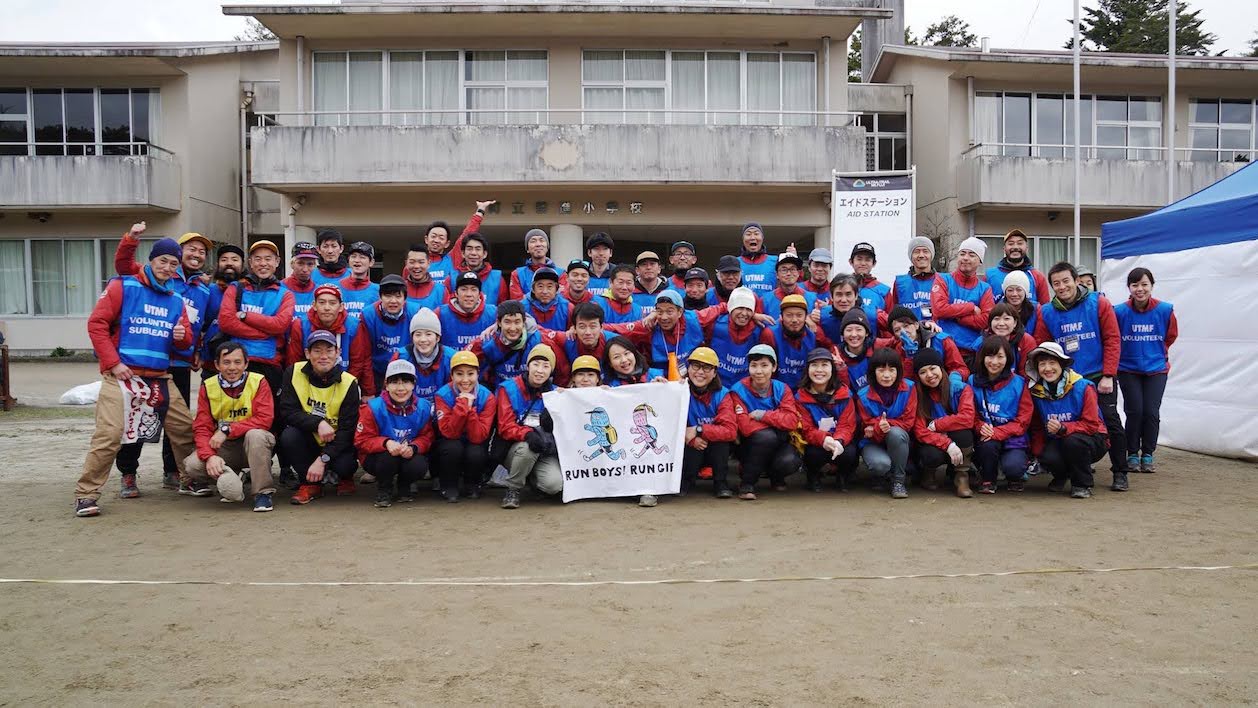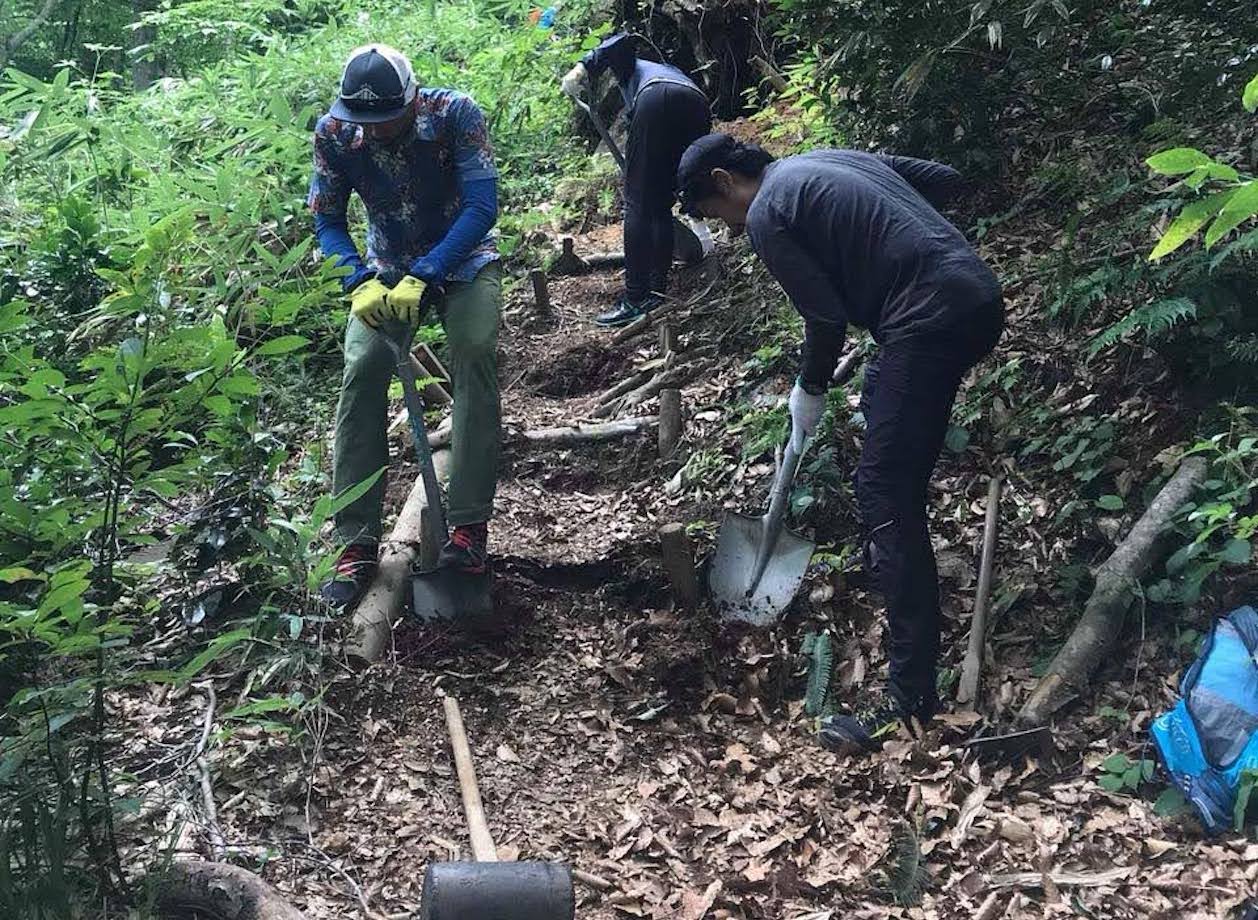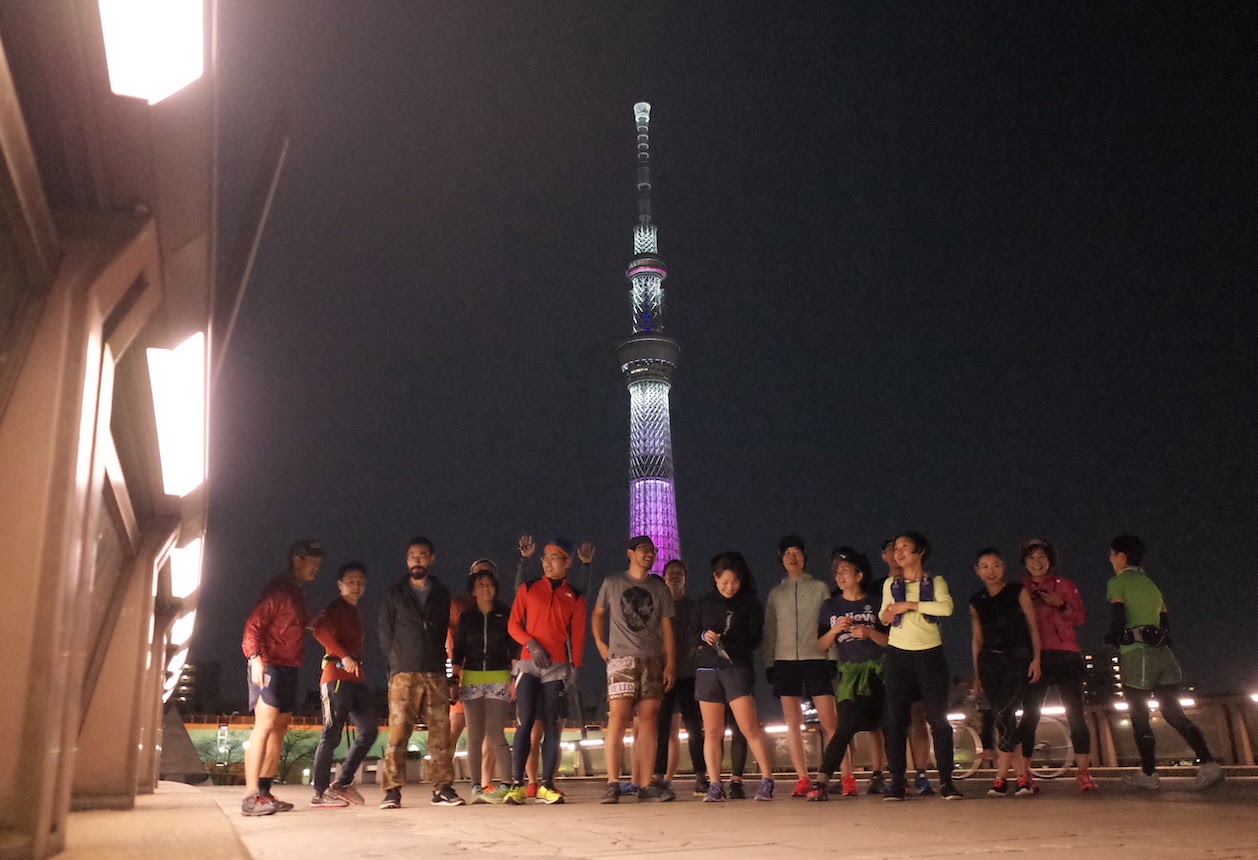The Trail Running Community - a Forward-Looking Group, Energizing the City and All of Japan.
The Trail Running Community - a Forward-Looking Group, Energizing the City and All of Japan.

Trail running, a sport that allows participants to enjoy the thrill of a run through nature, while also posing severe challenges with vertical elements and climate shifts. The “Run boys! Run girls!” trail and general running shop actively works to broadcast the appeal of the sport widely through information sharing and events, as well as sale of products. The business has a shop in Bakurocho, Nihonbashi, an area far from the mountains, which still manages to draw trail runners from all around Japan. Their owner Mr. Kei Kuwabara states that “I want to increase the number of people who interact with trail running right now,” and we took the opportunity to ask him about why people should learn about trail running now, with points on the appeal of trail running and details about community activities at the forefront.
The Trail Runner Mentality Will Make Japan Proactive.
-Mr. Kuwabara, please tell us a bit about your history, and how you got into running and trail running (TR below).
I originally worked as a game console software planner after graduating college. After that, I found indoor soccer intriguing as my hobby at the time, and wanting to make it into content people got excited for, in 2002 I launched a company that focused on managing indoor soccer club teams and running an indoor soccer arena with an adjoining café. I worked on that for about eight years, afterward.
Once that business settled down a bit, I was looking for something I wanted to do next, and took up running out of a feeling that my body was changing and my metabolism was slowing down as I aged. But at first I couldn’t even run five kilometers at a time, and hated it when it was cold, so it was hard to keep at it. With that going on, I found a Nike promotion where you’d record your run times in an app, and send that to friends like the baton in a relay for competitive team races. I got my friends to join me in that, and we somehow won the grand prize (laughter). Having someone comment on your run even when you did it alone, and passing the baton to someone else: these things build team unity. It feels great to feel community developing, and I remember that it increased my motivation by a lot, overnight.
Next, when I was really fired up for running like that, I got an invitation to go for a TR. It was really hard running in the mountains, at first, but I tried adding just one day of TR a month into my running schedule. After doing that for a while, someone suggest that I should participate in the largest TR event in Japan, since it was happening soon. When it happened, it was a huge challenge for me to take on, having only run 20 km trails at the longest, with the event being a 90 km race on mountain trails, even as a half-course. I refused and said there was no way I could handle it, initially, but gave in to the passion in the invitations, and worked up the courage to enter. I resolved to participate six months before the event, so after that I got serious about TR training, in order to gain the strength for a 90 km run before the event.

Mr. Kuwabara mentions that he has always enjoyed involving friends in things he wanted to try at cultural and sports festivals. He experiments with things he finds intriguing by involving those around him
-So running and TR as a hobby led you to found “Run boys! Run girls!” But what made you want to make a business of it?
There were two factors that made me decide to open “Run boys! Run girls!” First, I wanted to address the lack of information that had struck me when I took up TR training. I started out with running friends who were still fellow amateurs, at the time, so we couldn’t find much information, and it was a struggle. Compared to running, there’s a lot to look up before you go for TR, like where to go and what sort of gear (equipment) to use, and so on. But there wasn’t much information to look into, and there was a lot we didn’t know. Then, the owner of a small outdoor shop in Kansai that I visited gave me all sorts of details on the mountains, and shoes that are popular in the US where TR is hot, and other things I wanted to know. It was incredible. There was a large shop that handled TR-related items in Tokyo, too, but the experience made me really feel that we needed a place for that sort of close-knit communication.
The other factor was the Great East Japan Earthquake. The period when I was resolving to take part in the big TR event happened to overlap precisely with the immediate aftermath of the Great East Japan Earthquake, and as I spoke with the people who invited me, I got a strong sense that “their mentality is exactly what Japan needs right now.” It was a bit of a surprise, but it turns out that a lot of trail runners weren’t originally in great shape or good at sports. Rather, they liked running and got so far into it as to fall in love with TR. When that type of person takes on TR as a challenge, they encounter new thrills and fun, but they also run into a lot of tough issues that make them want to quit. But considering ways to get past those struggles, and setting new goals past them as you share your experiences with those around you, those are some of the rewards of the activity. I thought they were amazing, with the toughness from taking on challenges over an over, and finding solutions even when they ran into walls. The strength to take on goals that seem impossible at first glance, the strength to train toward and achieve goals, and the strength to bounce back and laugh even in the face of failure. I felt that if we increase the number of people with these three types of “strength” that trail runners naturally build, we will make Japan into a more proactive and lively country.
A Desire to Create a “Place” That Generates Communication
-What motivated you to open a store?
When we opened, the only set thing was the store name; we didn’t have a concrete image of the type of store we wanted. My image was of a “place” where people gathered, first of all, as a means of increasing the number of trail runners and growing the TR community.
I signed the contract for the store in March 2012, and was excited to start stocking in summer and making sales. But it turns out all the product showcases had already ended by then (laughter), and it was almost a year until we could stock up next. But that year produced precious prep time for us to determine a direction for the store during.
Indoor soccer and TR actually have a point in common, in that they’re both subculture activities with mainstream versions in the form of soccer and running. People tuned in to a subculture tend to have a very strong sense of community, possibly because they exchange information within a confined area. The “lack of information” I sensed when I took up TR with friends was because we came from outside the community. When we got even a little bit into the community, we found information all around, and that people would share all sorts of information with us. So the year until we were able to stock products gave us time to merge into the TR community personally, gaining more connections, gathering information, and visiting all sorts of sites. Also, having a location but no stock gave us time to use the space to hold talks, create a Facebook page and share information of our own, and build a foundation for our own community. When we opened as a store a year later, I was amazed and delighted to see a line waiting to get in.

“Run boys! Run girls!” even produces original merchandise, including hand towels, eco-friendly water bottles, and more.
-It must have taken courage to take on a challenge like opening a store and starting a community, right after taking up TR yourself.
Given how strong the community’s spirit is, I was a bit concerned about whether a newcomer to the sport could succeed with a shop. So I almost decided that rather than pushing myself to the forefront as the owner, I’d hire a veteran TR sportsperson to manage the store. But then our prospective manager canceled during the process, and I ended up having to take a role in the store as the owner and manager. But ultimately, it all went well. I think the foundation for “Run boys! Run girls!” is in providing the information I wanted when I first took up TR, and in planning events to help me grasp the needs of the community as a trail runner, and so on. For example, we have “group runs” where people show up together on a set day of the week to go running, and the “club” that primarily trains for races. I started both of those communities – which are currently active – because I wished they had been there for me, originally.
Both “Groups Runs” and the “Club” Can be Fun
-I’d like to hear more details about both communities, but first, what led you to start the group runs?
When I finally got to actually opening the store, although I did want to expand the community, I was busy and couldn’t get around to doing events. That’s when the idea of group runs came to me. It’s popular in the US for people to gather at local running shops or pubs and go for a run, and when I opened the shop in 2013, we still weren’t doing the same in Japan. What we did have were seminar-type events where you’d pay money and have a coach who taught form. That made me want to make something more freeform and casual like the US version, so I started the group runs. We just set a day of every week and a time to gather, and then go for a run. At first, it was just people we talked to who came, but over time the participants formed friendships among themselves and began bringing new participants, and the network grew organically. We tend to draw 20 to 30 people now, just naturally, and the group run members even do things and go on trips together, individually.
We also sometimes invite people on the group runs when they visit the shop out of a desire to start TR. There are some psychological hurdles to clear in the relationship between a store and a customer, where people are reticent or feel pressured to buy things, but placing everyone on the same level in a group run lets us speak freely and eases communication.

“We value having everyone run together at the group runs, so we match pace with the slowest person in the group.”(photo provided by Run boys! Run girls!)
-Now, what does the “club” do?
A lot of people want to take part in a race after a while at TR. I ran in a lot of races myself, for a while, and there’s a limit to what you can do by training alone and improving personal records, as you’d expect. That made me want to train for a race, so I hired a coach and planned regular practice sessions, and invited anyone I knew who might want to join in. At the time, I mostly held one-shot events, and didn’t think there would be much interest. But once we got started, I was amazed to see we had about 50 entrants. That led me to found the “club.” It currently has about 110 members, and we get regular training from a coach and participate in competitions together. We even volunteer to help run TR competitions and help maintain mountain trails. Most TR competitions and course maintenance depend on volunteers, so we started that sort of activity out of a desire to give back to where we normally have so much fun on our runs.


These days, in addition to volunteering, training, and participating in races held by the club as an organization, the club members independently go on retreats and take on activities(photo provided by Run boys! Run girls!)
Also, the club members pay us to run the club, so we’re constantly looking for ways to keep them engaged with the club, and to make it essential. For example, we make gear that only club members can buy, and starting this year we’ll be holding members-only monthly seminars. I’ve had someone tell me “joining the club made my life more fun!” which made me very happy, and I want to create as many experiences and activities for the members as I can, to give them back more value than the membership fees. I want them to think “I’m glad I was here,” and “I’m glad I got the chance to learn that.”
-So there’s clearly value in having both “group runs” and the “club,” then.
Having both the more casual group runs and the more core club lets people step up a tier over time, and also gives us more expansive reach, you might say. For example, even if things change and the club no longer suits your lifestyle, you can join in the more casual group runs, or go the opposite direction. I also have friends who started from the group runs, fall in love with running, and joined the club. In that sense, we might be achieving our goal of “creating as many trail runners as possible” precisely because we have the two communities.
-What do you hold as important in running a community, Mr. Kuwabara?
I guess that might be finding a balance within the community. We always hold our own definitions and have a sense of tension about what sort of place we want “Run boys! Run girls!” to be, but we make sure not to clash with the community too much. For example, in a freeform community like the group runs, people lose interest if they sense a business purpose to things. So we maintain an awareness that we need to convey “the atmosphere of what we do” through participant attitudes and the types of activities, rather than spelling out the basic community concept.
A Hub for Trail Runners That Came to Fruition Thanks to Bakurocho, Nihonbashi
-So why did you end up deciding to open a TR specialty store in the city center, in the first place?
TR as an activity involves running in the mountains, but the great majority of the runners in the Tokyo metropolitan area live in the city center. So rather than setting up near the mountains, I thought it would be good to give people a point of contact with the mountains near where they lived. I also thought it would be better to be located within range for easy access for ordinary people, in order to act as a foothold or gateway for people who want to get into TR.
-Was there any reason why you selected Bakurocho, Nihonbashi?
Someone I know ran a café around here, and I came here a lot. There were a lot of new businesses renovating places and so on, and I felt like it was a fun area that really stimulated the senses. Also, the fact that transit is very good here was part of the appeal. You’re not far away from Kamakura, the Miura Peninsula, or Saitama or Chiba if you want to stretch your legs, and you also have quick access to Haneda and Narita, and Tokyo Station. So we get customers from all over Japan. Trail runners tend to be light on their feet and usually gather their own information, so it’s critical to be in a place they’ll think might be a bit far, but easy enough to get to and worth a trip.
Also, the area has a lot of landmarks, so it’s fun to run in, all else aside. We usually run for about an hour and cover 10 kilometers on group runs, and there are a lot of locations where you can take in Tokyo flavor within a five-kilometer outward trip. That includes the Tokyo Skytree, Senso-ji Temple, the University of Tokyo Campus, Tsukuda Island, the Nippon Budokan, and more. Runs along the Sumida River are very refreshing, and there are also a lot of courses for enjoying Tokyo by night, when it’s empty.

One of the area’s many charms is the ability to enjoy night views of landmarks we get surprisingly few chances to see, even living in the city.(photo provided by Run boys! Run girls!)
Making Running a Tool for Energizing the City
-Are there any challenges you want to take on going forward, with “Run boys! Run girls!”?
Even now, we occasionally get customers from overseas who are into running and TR and whose friends send them our way, but separately from them, I hope to get chances to introduce Tokyo running courses that we use all the time, for the foreign residents Tokyo currently has. There are a lot of youth hostels in this area, and I’m sure a lot of runners stay there. I think it would be great to build a connection with that sort of crowd.
-Being in the city really does help with having a lot of Tokyo landmarks on hand, then!
There’s actually an activity called “Photo Rogaining” where participants receive maps, find checkpoints on a course within a time limit, and compete for points based on photos taken. And I want to try combining that with running for a project to help people discover the fun of both the city and running, at once. I hope for the business to connect people who energize the city, and help use running as a way to stimulate the area.
The people we attract at “Run boys! Run girls!” are tough but graceful, and most are very nice. Just being around them puts me in a positive mood. We want to spread that mentality through the things we do “right now,” when the news is always so dark. We want to encourage those around us and the city to thrive.

The inside of the store, packed with TR gear, including shoes and specialty wear in particular
Interview and text: Kei Furuta (Konel), Photography: Daisuke Okamura
Run boys! Run girls!
A trail running and general running specialty store located in Higashikanda, Chiyoda City, Tokyo Prefecture. In addition to retail, they also work to popularize trail running and running by sharing information and holding running and social events.




